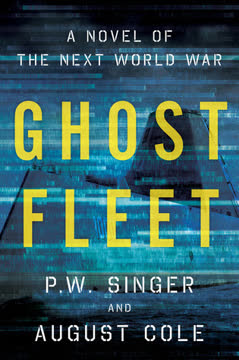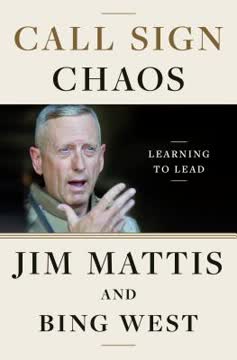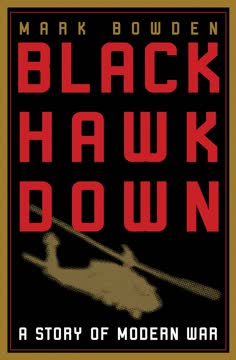Key Takeaways
1. Human resistance to killing is powerful and innate
The average and healthy individual has such an inner and usually unrealized resistance towards killing a fellow man that he will not of his own volition take life if it is possible to turn away from that responsibility.
Innate resistance: Humans have a deep-seated aversion to killing members of their own species. This resistance is so strong that in many historical battles, a significant percentage of soldiers deliberately avoided killing enemy combatants, even at the risk of their own lives.
Historical evidence: S.L.A. Marshall's groundbreaking research after World War II revealed that only 15-20% of American soldiers actually fired their weapons at the enemy with the intent to kill. This finding has been corroborated by studies of other conflicts throughout history, including the American Civil War, where many soldiers were found to have loaded their weapons multiple times without firing.
Evolutionary perspective: This resistance likely has evolutionary roots, as species that readily kill their own kind would be at a disadvantage for survival. The reluctance to kill fellow humans may be seen as a natural extension of the social bonds and empathy that allow human societies to function and thrive.
2. Physical and emotional distance facilitate killing
From a distance, I can deny your humanity; and from a distance, I cannot hear your screams.
Types of distance: Several forms of distance can make killing easier:
- Physical distance (e.g., artillery, bombing)
- Emotional distance (e.g., dehumanizing the enemy)
- Cultural distance (e.g., racial or ethnic differences)
- Moral distance (e.g., perceiving the enemy as evil)
- Mechanical distance (e.g., viewing targets through a scope)
Impact of technology: Modern warfare has increasingly relied on technology that creates greater physical and emotional distance between combatants. This distance makes it easier for soldiers to overcome their natural resistance to killing by reducing the immediate, visceral impact of their actions.
Psychological mechanisms: Distance allows individuals to psychologically separate themselves from the act of killing, making it feel less personal and more abstract. This separation can lead to a reduced sense of responsibility and diminished empathy for the victims, facilitating the ability to engage in lethal actions.
3. Authority and group dynamics override individual morality
Never underestimate the power of the need to obey.
Milgram's obedience experiments: Stanley Milgram's famous studies demonstrated that ordinary individuals could be compelled to inflict apparent harm on others simply through the demands of an authority figure. This principle extends to military contexts, where soldiers are conditioned to follow orders without question.
Group absolution: The diffusion of responsibility within a group can make individuals more willing to engage in violent acts. Soldiers often report feeling that their actions are justified because they are part of a larger unit or following orders from superiors.
Key factors in authority-driven killing:
- Proximity of authority figures
- Perceived legitimacy of authority
- Intensity of demands
- Group pressure and conformity
4. Conditioning and desensitization enable higher kill rates
Two shots. Bam-bam. Just like we had been trained in "quick kill." When I killed, I did it just like that. Just like I'd been trained. Without even thinking.
Modern training techniques: Military training has evolved to incorporate psychological conditioning that increases soldiers' willingness and ability to kill. These methods include:
- Realistic target practice with human-shaped silhouettes
- Simulations and video game-like training scenarios
- Repetitive drills that create muscle memory
- Desensitization through exposure to violent imagery
Increased effectiveness: These conditioning techniques have dramatically increased firing rates in modern conflicts. In Vietnam, the firing rate reached 90-95%, compared to the 15-20% observed in World War II.
Ethical concerns: While these methods have proven effective in creating more lethal soldiers, they raise ethical questions about deliberately overriding an individual's natural resistance to killing and the long-term psychological consequences for those subjected to such training.
5. The act of killing often leads to severe psychological trauma
I can remember whispering foolishly, "I'm sorry" and then just throwing up ... I threw up all over myself. It was a betrayal of what I'd been taught since a child.
Immediate reactions: Soldiers who kill in combat often experience a range of intense emotional reactions, including:
- Exhilaration or euphoria
- Profound remorse and guilt
- Physical reactions like vomiting or shaking
- Emotional numbness or dissociation
Long-term effects: The psychological impact of killing can persist long after the event, contributing to:
- Nightmares and intrusive thoughts
- Difficulty in personal relationships
- Substance abuse problems
- Depression and anxiety
Moral injury: Many veterans struggle with reconciling their actions in war with their personal moral beliefs, leading to a deep sense of shame, guilt, and inner conflict that can persist for years or even decades after their service.
6. Post-traumatic stress disorder is a common result of combat
Psychiatric breakdown remains one of the most costly items of war when expressed in human terms.
Prevalence: Post-traumatic stress disorder (PTSD) is a common outcome for combat veterans. Estimates suggest that between 18-54% of Vietnam veterans have experienced PTSD at some point after their service.
Symptoms of PTSD:
- Intrusive memories or flashbacks
- Avoidance of trauma-related stimuli
- Negative changes in thoughts and mood
- Hyperarousal and reactivity
Societal impact: The high rates of PTSD among veterans have far-reaching consequences for society, including:
- Increased rates of homelessness and unemployment among veterans
- Higher incidence of substance abuse and domestic violence
- Strain on healthcare and social support systems
- Intergenerational trauma affecting families of veterans
7. Modern media may be conditioning violence in society
The same tools that more than quadrupled the firing rate in Vietnam are now in widespread use among our civilian population.
Media violence: Exposure to violent media, including movies, television shows, and video games, may be desensitizing individuals to violence and potentially increasing aggressive tendencies.
Conditioning mechanisms: Similar to military training, modern media employs techniques that can condition viewers:
- Classical conditioning (associating violence with entertainment)
- Operant conditioning (rewarding violent actions in video games)
- Social learning (imitating violent role models)
Societal concerns: The widespread use of these conditioning techniques in entertainment raises questions about their impact on society, particularly on young people. There are concerns that this exposure may contribute to:
- Increased aggression and violent behavior
- Decreased empathy and sensitivity to real-world violence
- Normalization of violent problem-solving strategies
Need for awareness: Understanding the potential impact of media violence and its similarities to military conditioning techniques is crucial for developing strategies to mitigate negative effects and promote healthier forms of entertainment and conflict resolution.
Last updated:
FAQ
What's On Killing about?
- Exploration of Killing in War: On Killing by Lt. Col. Dave Grossman examines the psychological cost of learning to kill in war and society, focusing on the innate resistance humans have to killing.
- Psychological and Social Aspects: It discusses how authority, group dynamics, and emotional distance influence a soldier's willingness to kill, and addresses the trauma and guilt associated with killing.
- Historical Context: Grossman uses historical examples and psychological studies to provide a comprehensive study of the act of killing throughout history.
Why should I read On Killing?
- Understanding Human Nature: The book offers profound insights into human nature, particularly regarding violence and aggression, challenging readers to confront uncomfortable truths.
- Relevance to Modern Society: Grossman connects themes of killing in war to contemporary issues like media violence, making it relevant for military personnel and civilians alike.
- Educational Resource: It serves as a valuable resource for military professionals, psychologists, and educators, providing a framework for understanding the psychological effects of combat and violence.
What are the key takeaways of On Killing?
- Resistance to Killing: Most individuals have a strong, instinctive resistance to killing, which can be overcome through conditioning, authority, and group dynamics.
- Psychological Trauma: Killing in combat leads to significant psychological trauma, guilt, and horror, with long-lasting effects on soldiers.
- Influence of Distance: Physical and emotional distance from the victim affects a soldier's ability to kill, with greater distance making it easier to commit violence without remorse.
What are the best quotes from On Killing and what do they mean?
- Innate Resistance: "The average and healthy individual... has such an inner and usually unrealized resistance towards killing a fellow man." This highlights the moral and psychological barriers to killing.
- Soldier's Paradox: "The soldier above all other people prays for peace, for they must suffer and bear the deepest wounds and scars of war." It reflects the emotional toll of warfare on soldiers.
- Confronting War Realities: "It is to no purpose, it is even against one's better interest, to turn away from the consideration of the affair because the horror of its elements excites repugnance." Grossman argues for confronting the realities of war and killing.
How does [Author] define the psychological cost of killing?
- Psychological Burden: Grossman describes it as a heavy burden leading to long-term trauma and guilt, often manifesting in mental health issues like PTSD.
- Emotional Responses: Soldiers experience emotional stages after killing, including initial euphoria followed by guilt and horror, leading to psychological distress.
- Coping Mechanisms: Soldiers often cope through denial or rationalization, and understanding these mechanisms is crucial for addressing veterans' mental health needs.
What role does authority play in the act of killing according to On Killing?
- Influence of Command: Authority figures can significantly influence a soldier's decision to kill, with commanding officers compelling soldiers to act against their instincts.
- Milgram's Experiment: Grossman references Milgram's studies, showing individuals' willingness to inflict harm when directed by authority, illustrating authority's power in overcoming moral objections.
- Group Dynamics: Group cohesion and peer pressure further enable killing behavior, with soldiers more likely to kill when accountable to comrades and leaders.
How does On Killing relate to media violence?
- Desensitization: Grossman argues that media violence desensitizes individuals, making them more likely to accept violence as a norm, leading to increased societal aggression.
- Conditioning Effects: Media violence conditions individuals, especially children, to respond to conflict with aggression, paralleling military conditioning techniques.
- Cultural Impact: The normalization of violence in media contributes to real-world violence and aggression, connecting media themes to broader societal issues.
What is the significance of the "Well of Fortitude" concept in On Killing?
- Emotional Resilience: The "Well of Fortitude" represents the emotional stamina soldiers draw upon during combat, which depletes under stress, leading to psychological breakdown.
- Cumulative Stress: Continuous combat stress drains a soldier's fortitude, resulting in exhaustion and mental health issues, highlighting the need for rest and recuperation.
- Leadership Influence: Effective leaders can help replenish soldiers' fortitude through support and encouragement, sustaining morale and resilience.
How does Grossman address the concept of killing at different ranges?
- Distance and Killing: Grossman categorizes killing into various ranges and discusses how distance affects willingness to kill, with greater distance making it easier to commit violence.
- Emotional Impact: Close-range killing often involves intense emotional responses like guilt and horror, contrasting with the lesser emotional impact of long-range killing.
- Psychological Mechanisms: Emotional and physical distance buffer the killer from the reality of their actions, enabling killing at different distances.
What are the implications of On Killing for understanding combat trauma?
- Recognition of Trauma: Grossman emphasizes recognizing and addressing the psychological trauma associated with killing in combat, essential for supporting veterans.
- Coping Strategies: Soldiers use coping strategies like denial and rationalization to deal with the psychological cost of killing, affecting long-term mental health.
- Need for Support: Grossman advocates for better mental health support for soldiers and veterans, highlighting the importance of addressing combat experiences' emotional impacts.
How does [Author] explain the influence of group dynamics on killing?
- Peer Pressure: Group dynamics, including peer pressure, can significantly influence a soldier's willingness to kill, as soldiers often act in accordance with group expectations.
- Cohesion and Accountability: Soldiers are more likely to kill when they feel accountable to their comrades and leaders, with group cohesion playing a crucial role.
- Moral Support: The presence of a supportive group can help soldiers rationalize their actions, reducing individual moral objections to killing.
How does [Author] connect historical examples to the psychological aspects of killing?
- Historical Context: Grossman uses historical examples to illustrate the psychological aspects of killing, providing a comprehensive understanding of the act throughout history.
- Psychological Studies: He draws on psychological studies to support his arguments, showing how historical and psychological perspectives intersect.
- Illustrative Examples: These examples help readers understand the complexities of killing, offering insights into the factors that influence soldiers' actions across different eras.
Review Summary
On Killing receives mixed reviews. Many praise its insights into the psychology of killing in combat and its examination of PTSD. Readers find the historical analysis and personal anecdotes compelling. However, some criticize Grossman's reliance on disputed data and repetitive arguments. The book's later sections on media violence and societal implications are controversial. While some readers consider it eye-opening and thought-provoking, others find it biased and lacking scientific rigor. Overall, it remains a widely discussed work on the psychological impact of warfare.
Similar Books








Download PDF
Download EPUB
.epub digital book format is ideal for reading ebooks on phones, tablets, and e-readers.





